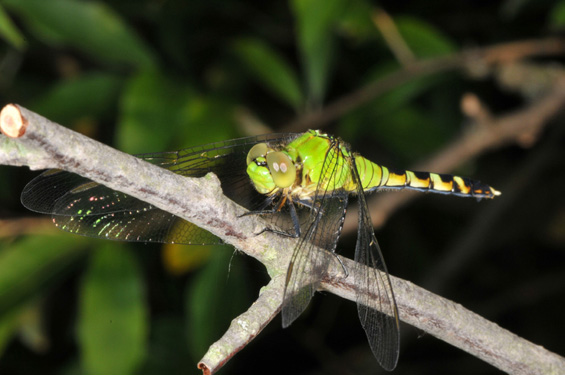
Common Name: Dragonfly
Scientific Name: Odonata: sp
Status: Beneficial aquatic predator
Beneficial Stage: Immature and adult
Biology: Dragonflies are beneficial predatory insects both in their adult and immature stages. Dragonfly adults are often brightly colored and have long, slender abdomens, large, multi-faceted eyes, and two pairs of long, slender wings with net-like veins. Both pairs of wings usually have a stigma (colored patch) near the middle of the leading edge. The wings do not fold and are held outstretched when at rest. Dragonflies are very fast and active fliers, making them effective predators of insects flying near ponds or other bodies of water.
The immature stages of dragonflies are aquatic. Eggs are laid in or near bodies of water. Within a week the eggs hatch, and may larvae go through 12 to 15 instars. Nymphs are very predacious, and have a unique, extendable jaw that they use to capture other aquatic insects. The majority of their life is spent in the immature stage.
Value: While in its immature stages, the dragonfly is an important part of the food web and is eaten by many fish and other aquatic animals. Likewise, it preys on smaller insects itself. As adults, dragonflies actively feed on insects flying nearby. Because of their general predatory behavior, dragonflies and their nymphs are considered to be very beneficial insects.
|